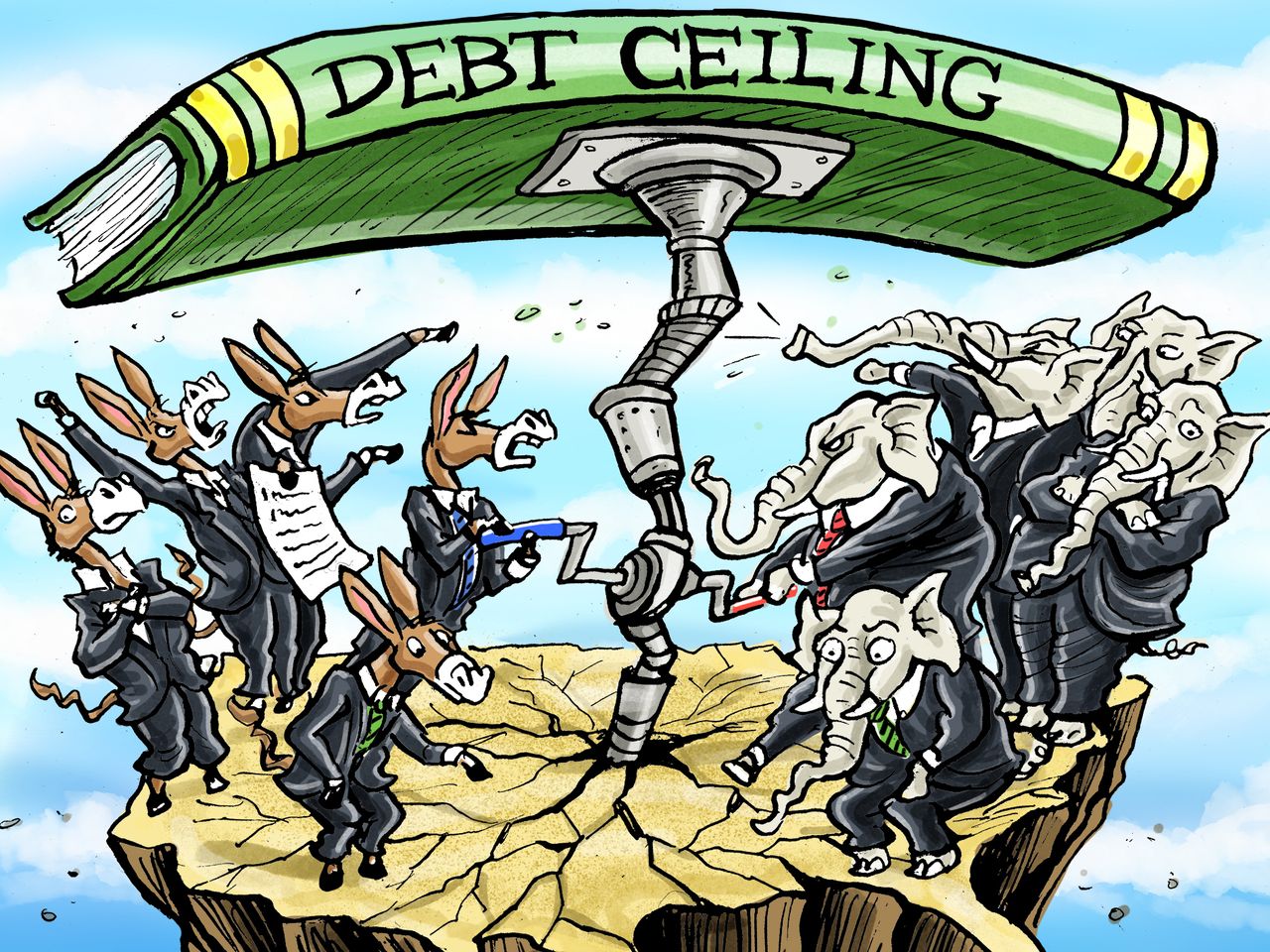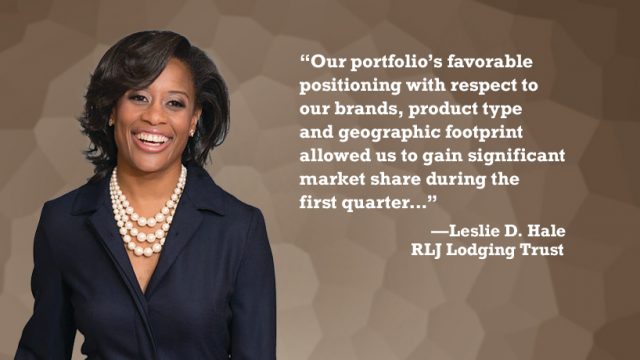Which are the top Black-owned businesses in the United States today? With many successful businesses privately held—and not required to report detailed information to the Securities and Exchange Commission (SEC)—this report focuses on publicly traded companies.
KEY TAKEAWAYS
- Of the 5.8 million employer businesses in the United States in October 2020, 140,918 were Black-owned.
- Ninety-six percent of Black-owned businesses were nonemployer firms, compared to 80% of all small businesses. Thirty-two percent of Black-owned employer firms were in the healthcare and social services sector.
- Black entrepreneurs face obstacles such as a limited access to startup capital, less managerial and industry experience, and operating in lower-revenue industries.
- RLJ Lodging Trust, one of the largest publicly owned Black businesses, reported total assets of $5.92 billion in June 2020.
Public vs. Private
Many of the world’s most successful businesses are publicly traded companies, such as Amazon, which originally went public in 1997 and has a net worth of $982.62 billion as of Jan. 26, 2022.12 That said, some very successful companies chose to stay private to avoid the scrutiny and regulations that come with going public. Cargill, for instance, has been in operation and remained private since 1965; as of 2022, the global food corporation has already pulled in $165 billion in revenue.34 Granted, this operational privacy comes at the cost of not being able to sell stock on a public exchange, which could help a company grow even further.
As privately held companies aren’t required to meet the SEC’s strict filing requirements, it can be difficult to get specific information about the success of a privately held business. Public companies, however, must comply with SEC rules; this allows us to learn a lot more about them. Unfortunately, the SEC only requires businesses to disclose financial performance data, which wouldn’t include the shareholder demographics needed to ascertain whether or not a company is minority-owned.
In another demonstration of the long-term economic effects of systemic racism, only an estimated 140,918 of the approximately 5.8 million employer businesses in the United States in November 2022 were Black-owned. That’s around 2.44% of employer businesses.5 Yet the 41.1 million Black people living in the U.S. at the end of 2020 comprised 12.4% of the total population.6
When you get to public companies, the numbers are even smaller: Of the 4,300 public companies in the U.S. reported by American Council for Capital Formation in June 2022, we found seven Black-owned companies. That comes to approximately 0.16% of public companies.7
What Makes a Business Black-Owned?
One complication with classifying the ownership of any public company is that it has stockholders. What makes a public company—or any business—Black-owned? The National Minority Supplier Development Council (NMSDC) defines a minority business enterprise (MBE) as a “business [that] is at least 51% owned by [United States citizens who are Asian, Black, Hispanic, and/or Native American] or, in the case of a publicly owned business, at least 51% of the stock is owned by one or more such individuals.” Simply put, the management and daily operations should be controlled by the minority owner(s)/shareholder(s). The NMSDC further clarifies that a Black-owned business is one whose owner is a “U.S. citizen of African descent,” which would include both African Americans and African immigrants.8
Despite defining what constitutes a minority-owned public company, the NMSDC doesn’t offer any concrete data on the number of active Black-owned public companies in the U.S., nor is that information readily available from other official sources. All companies were included in this article based primarily on self-reporting themselves as Black-owned public companies.
“I would make a caveat for a situation where somebody owns less than 51% of the shares, but they were equal partners,” says Shomari Wills, a journalist and the author of Black Fortunes, one of Ebony magazine’s True Read picks of 2018. “Also, I would make a caveat for situations where somebody was a minority stakeholder—not the owner, but they were operating as the managing partner of the company.”
And here are two other terms that help define the market:
- Based on the most recent U.S. Census Survey of Business Owners, 96% of Black-owned businesses were nonemployer firms, compared to 80% of all small businesses.9 Nonemployer firms are defined as “businesses that that have no paid employees and are subject to federal income tax.” As these firms are generally small and have minimal economic impact, they are left out of most other Census Bureau business statistics, making it difficult to acquire a full picture of the Black business landscape in the U.S.1011
- The remaining 4% of Black-owned businesses are employer firms.12 According to the Census Bureau’s Annual Business Survey, 29.5% of Black-owned employer firms were in the healthcare and social services sector.5
“I think [the healthcare and social services sectors] lend themselves to community-based businesses, which have a pretty extensive history... Providing local services or community-based services is something that goes back all the way to segregation when you couldn’t necessarily go and open a business downtown if you were a Black person, so you had to look at businesses that you could operate within your own community,” Wills explains.
Some of those community-based businesses have grown into major companies, and two of the seven top Black-owned public companies that we identified are in the healthcare sector.
Particular Challenges Facing Black-owned Businesses
In 1992, there were 621,912 Black-owned businesses in the U.S.13 By 2012, that number rose to 2.58 million, before decreasing to 1.1 million by 2020 (pre-pandemic).14 Two months later, this number had fallen to 640,000.15 Periods of ups and downs are common to all businesses. However, Black entrepreneurs continue to encounter unique obstacles that make it difficult to reach the same level of success as many of their competitors, such as a limited access to startup capital, fewer useful connections, and operating in lower-revenue industries.16
Black Metropolis: A Study of Negro Life in a Northern City, published in 1945 by two American sociologists, is considered a foundational work on the subject of African American sociology and cultural studies. It influenced generations of scholars and activists and is a key resource for investigating the impact of redlining, racial bias in medical-care decision-making tools, and the history of lending discrimination in the United States.
Capital
Approximately 44% of Black business owners rely on cash to fund their business, compared to 37% for the average small business owner.17 Cash is a riskier means of financing a business, as it dips into funds also needed for essential items and paying bills, whereas a commercial loan allows business owners to retain much of their liquid assets. But getting access to loans isn’t easy.
In 2018, the likelihood of large banks approving at least some financing for White-owned firms was 64.8%, compared to 44.8% for their Black-owned counterparts.18 Additionally, in 2017, banks were also three times as likely to follow up with White applicants than with more qualified Black business owners.19 In 2014, 28.4% of Black entrepreneurs found that their profits were negatively impacted by their access to capital, while 22.6% were themselves negatively impacted by the actual cost of capital.20
As reported by The Business Journals, since peaking prior to the 2007–2008 financial crisis, the annual number of loans to Black-owned businesses through the U.S. Small Business Administration’s 7(a) program decreased by 84% in 2020, compared to a 53% decline in 7(a) loans awarded overall. The report found an overall trend of significantly less lending to businesses in Black-majority neighborhoods, compared to White-majority ones. Orv Kimbrough, chief executive officer (CEO) of Midwest BankCentre, referred to this issue as “corporate redlining.”21
Connections
Black business owners have less access to the types of mentor and peer networks that can help grow a business—and they are less likely to have family connections who can help. In a 2017 survey conducted by Prosperity Now, 23.3% of White firm owners gained prior work experience as part of a family member’s business, compared to 12.6% of Black entrepreneurs.22
Cash Flow
Black firms are more frequently found in industries with a lower earning potential, including beauty salons, childcare, home healthcare services, janitorial services, and barbershops. And even in these sectors, White businesses still tend to earn more than competing Black-owned businesses.23
Meanwhile, Black businesses in more lucrative sections—including physician and mental health offices, plumbing and heating/air conditioning contractors, offices of lawyers, and full-service restaurants—also earn less than White counterparts.23
Overall, Black-owned firms averaged $58,000 in revenue in 2017, while White businesses averaged $546,000.24
Publicly Traded Black-owned Businesses
Amid—and despite—these challenges, some Black-owned businesses have become substantial public companies. Below are some of the biggest publicly traded Black-owned businesses, organized according to total assets.
They operate in a variety of sectors: healthcare, finance, broadcasting, and technology. One was founded in 1921, two were founded in the 1940s, two in 1979–1980, and the rest are 21st century companies.
RLJ Lodging Trust
- Total Assets (September 2022): $4.97 billion25
- Total Revenue (September 2022): $891.47 million26
- Earnings per Share (September 2022): $0.1026
- Year Founded: 200027
- Headquarters: Bethesda, Md.28
The most successful company listed here, RLJ Lodging Trust (RLJ), is a real estate investment trust with a portfolio consisting of 96 hotels across 23 states and the District of Columbia. Founded by Robert L. Johnson and Thomas J. Baltimore Jr. in 2000 as RLJ Development, RLJ Lodging focuses on “premium-branded, focused-service and compact full-service hotels” to capitalize on their upside potential. RLJ wasn’t publicly traded until 2011. In 2017, it completed a merger with FelCor Lodging Trust, allowing it to acquire 37 additional properties. The company’s portfolio includes several well-known brands, such as Courtyard by Marriott, Residence Inn by Marriott, Hilton Garden Inn, Homewood Suites by Hilton, Embassy Suites by Hilton, Hyatt Place, and Wyndham.27
Urban One
- Total Assets (September 2022): $1.25 billion29
- Total Revenue (September 2022): $352.56 million30
- Earnings per Share (September 2022): $0.0930
- Year Founded: 197931
- Headquarters: Silver Spring, Md.32
Originally founded by Cathy Hughes as Almic Broadcasting in 1979, Radio One started out with just a single station: WOL-AM in Washington, D.C. In 1987, Radio One added an FM station to its roster: WMMJ, also in Washington, D.C. Twelve years later, Radio One sold its first shares of common stock, making Hughes the first African American woman to head a publicly traded company. From 1999 to 2000, Radio One purchased an additional 35 radio stations. By the time the company changed its name to Urban One (UONE and UONEK) in 2017, it had expanded into a multimedia conglomerate, with brands including a television network (TV One, launched in 2004), two radio groups—one local, one syndicated (the latter, Reach Media, was acquired in 2005), a digital media company (One Digital, launched in 2007), and a branded content agency (One Solution, created in 2008).31 It would later add a television-focused digital magazine, CLEO TV, in 2019.33
Broadway Financial Corp.
- Total Assets (September 2022): $1.17 billion34
- Total Revenue (September 2022): $25.61 million35
- Earnings per Share (September 2022): $0.0635
- Year Founded: 194736
- Headquarters: Los Angeles37
Broadway Financial Corp. (BYFC) is the holding company for City First Bank, a federally chartered savings bank.38 Broadway Federal Bank was founded in 1947 as the Broadway Federal Savings and Loan Association by a group of Los Angeles civic leaders, including real estate broker H.A. Howard and dentist Dr. H. Claude Hudson. In 2021, Broadway Federal Bank merged with City First Bank, which made it the largest Black-owned minority depository institution (MDI) in the U.S. The Treasury Department has designated the bank as a Community Development Financial Institution (CDFI), due to its dedication to serving those who otherwise would be locked out of the financial system.36
Ping Identity Holding
- Total Assets (June 2022): $1.13 billion39
- Total Revenue (June 2022): $156.72 million40
- Earnings per Share (June 2022): $(0.81)40
- Year Founded: 200241
- Headquarters: Denver42
Founded by Andre Durand in 2002, Ping Identity Holding (PING) specializes in a wide variety of digital and online identity protection services through its trademarked Ping Intelligent Identity platform, including multifactor authentication, intelligent access controls, and identity data management.4344 Vista Equity Partners bought out the company in 2016 and later took it public in 2019.41 Ping Identity Holding has an impressive clientele, which includes five of the top North American retailers, seven of the largest healthcare companies, and 13 of the largest U.S. banks.44
Carver Bancorp
- Total Assets (September 2022): $755.72 million45
- Total Revenue (September 2022): $13.10 million46
- Earnings per Share (September 2022): $(0.43)46
- Year Founded: 194847
- Headquarters: New York City48
Much like Broadway Financial Corp., Carver Bancorp (CARV) is the holding company for Carver Federal Savings Bank, another federally chartered savings bank and CDFI. Founded by a group of community leaders and small business owners in 1948, Carver offers consumer and business banking products and services to traditionally underserved African American communities.49
Axsome Therapeutics
- Total Assets (September 2022): $338.96 million50
- Total Revenue (September 2022): N/A51
- Earnings per Share (September 2022): $(3.17)52
- Year Founded: 201253
- Headquarters: New York City54
The largest company in the healthcare sector on this list, Axsome Therapeutics (AXSM), is a biopharmaceutical firm. Founded in 2012 by Dr. Herriot Tabuteau, Axsome focuses on the development of novel therapies for managing central nervous system (CNS) disorders, for which treatment options are limited.55 The conditions that Axsome Therapeutics’ products are designed to treat include migraines, narcolepsy, fibromyalgia, major depressive disorder (MDD), and Alzheimer’s disease-related agitation, in addition to smoking cessation treatment.56
American Shared Hospital Services
- Total Assets (September 2022): $43.41 million57
- Total Revenue (September 2022): $14.71 million58
- Earnings per Share (September 2022): $0.1758
- Year Founded: 198059
- Headquarters: San Francisco60
American Shared Hospital Services (AMS) operates within the technological side of the healthcare industry by providing equipment to hospitals and medical centers.61 Although predecessor and California limited partnership Ernest A. Bates, M.D., Ltd. (d/b/a American Shared Hospital Services) was originally formed in 1980, American Shared Hospital Services wasn’t incorporated until 1983.59 The company offers several different financing solutions so that medical institutions can afford the state-of-the-art medical technology that ordinarily might be out of their reach.62 American Shared Hospital Services specializes in leasing radiosurgery, proton beam radiation therapy (PBRT), and intensity-modulated radiation therapy (IMRT) and image-guided radiation therapy (IGRT) equipment.63 Through its GK Financing subsidiary, American Shared Hospital Services is also the worldwide leader in Gamma Knife unit ownership, with the associated financing model having been expanded to incorporate the financing of other technology solutions, such as IMRT and PBRT.62
How many Black-owned companies are publicly traded?
According to our research, there are currently seven Black-owned public companies in the U.S.: RLJ Lodging Trust, Urban One, Broadway Financial Corp., Ping Identity Holding, Carver Bancorp, Axsome Therapeutics, and American Shared Hospital Services. Some Black-owned companies that were previously publicly traded are now subsidiaries of other businesses, such as such as Global Blood Therapeutics, which was acquired by Pfizer in October 2022.64
What is the largest Black-owned public company?
With total assets of $4.97 billion as of September 30, 2022, real estate investment trust RLJ Lodging is the largest Black-owned public businesses in the U.S.25
What is the oldest Black-owned company?
Founded in 1881, E.E. Ward Moving & Storage Co. is the oldest African-American-owned business in the U.S. Based in North Carolina, E.E. Ward is owned by husband and wife Brian and Dominique Brooks.65
The Bottom Line
If you’re looking for an alternative way to support Black-owned businesses outside of purchasing goods and/or services, consider one of these companies for your portfolio.
Directories of Black-Owned Businesses
For more information on the vast number of businesses with Black ownership, consult the following websites:





















